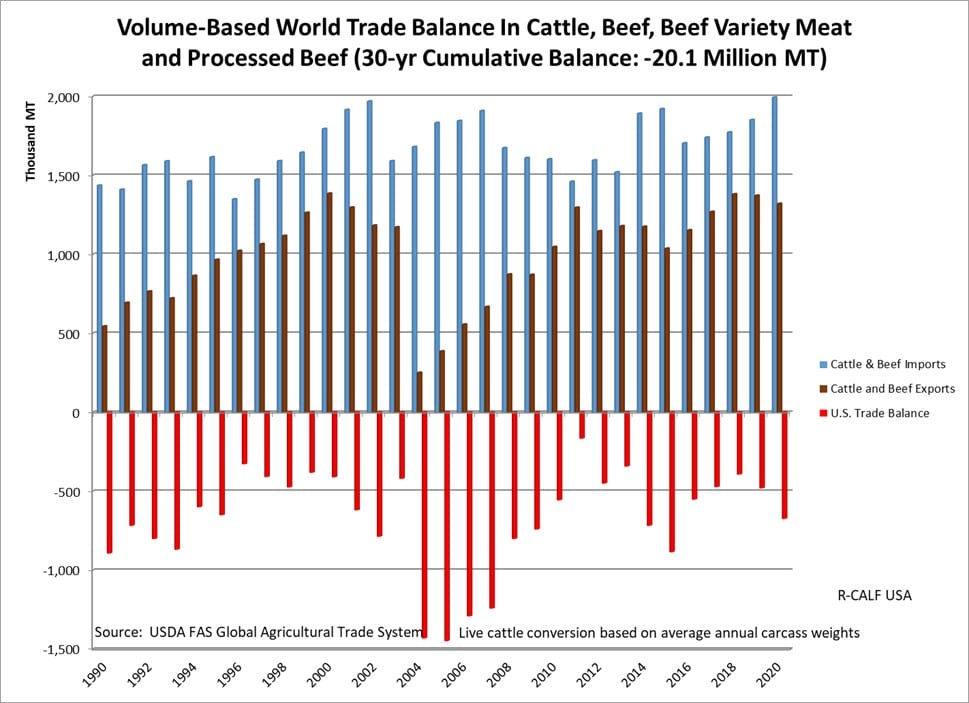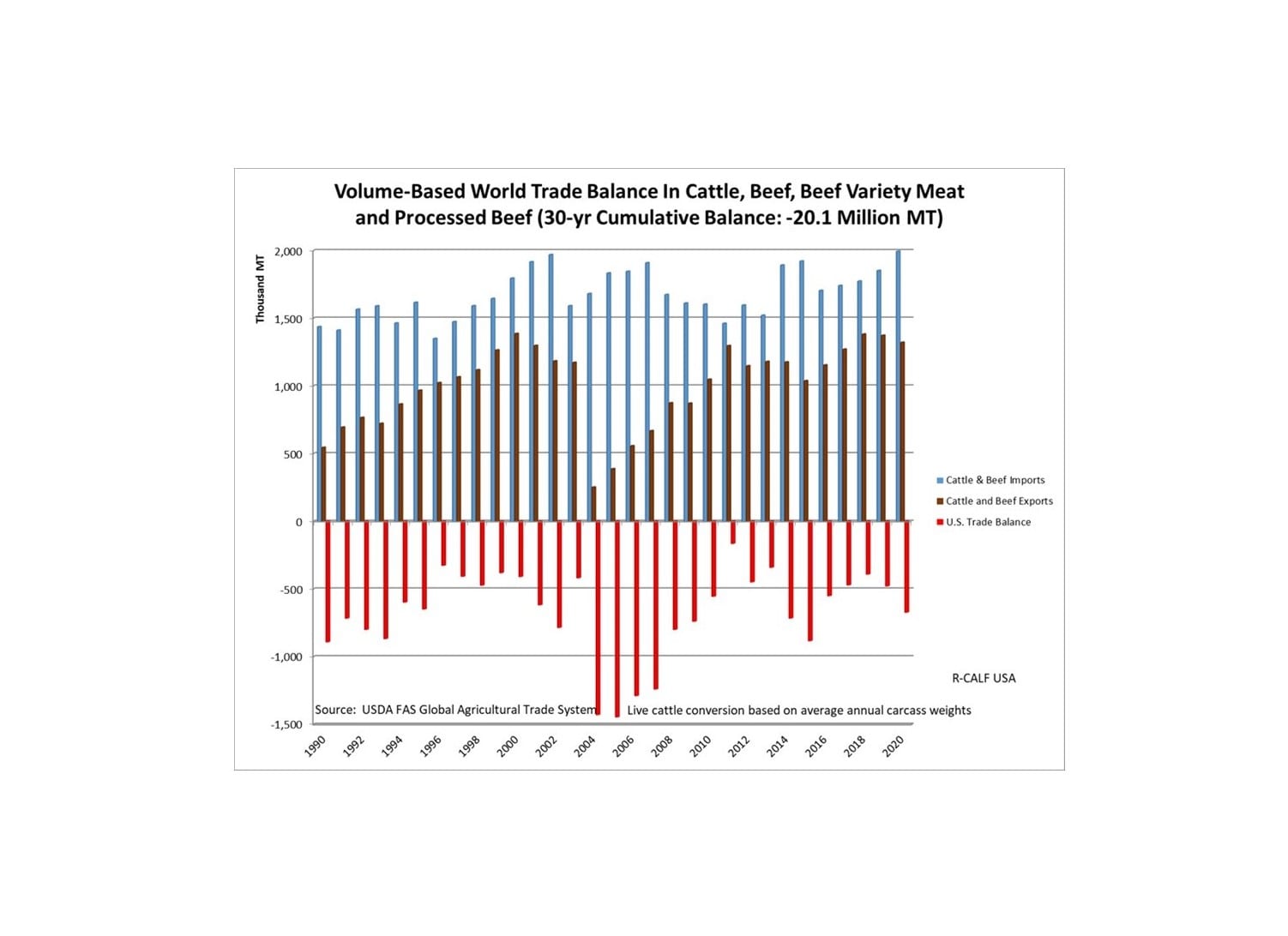For Immediate Release: February 11, 2021
Contact: R-CALF USA CEO Bill Bullard; Phone: 406-252-2516; r-calfusa@r-calfusa.com
For each 1-pound of beef and cattle exported in 2020, we imported over 1.5 pounds.
Billings, Mont. – The U.S. Department of Agriculture’s (USDA’s) recently released cattle and beef trade data for December provide the whole cattle and beef trade picture for the 2020 calendar year. According to R-CALF USA, the volume of imported beef, cattle, beef variety meat and processed beef hit an all-time high of nearly 2 million metric tons, or about 4.4 billion pounds in 2020.
Calculating the volume of both cattle and beef is difficult as imported beef and beef products are recorded by weight while imported cattle are recorded by the number of head. To account for these differing measures, R-CALF USA converts imported cattle numbers to pounds by multiplying the number of imported cattle by each years’ average cattle carcass weight. This enables R-CALF USA to express both imports and exports of beef and cattle in terms of weight.
The USDA’s recently updated data also show the average price of fed cattle in 2020 was just under $1.09 per pound, while all-fresh retail beef prices averaged about $6.39 per pound, the highest yearly average all-fresh beef price in history.
R-CALF USA CEO Bill Bullard said the 2020 average fed cattle price was lower than in any year during the past decade. He said in 2011 the average fed cattle price was $1.15 per pound, and back then consumers only paid on average $4.44 per pound for all-fresh beef.
Bullard explained that these data inform both cattle producers and consumers that importing record volumes of cheaper, undifferentiated beef and cattle does not correlate with lower consumer beef prices, but it does correlate with severely depressed domestic cattle prices.
“With that knowledge, both cattle producers and consumers should be calling their congressional delegations to tell them America must put a stop to failed trade policies that promote cheaper imports at the expense of American cattle farmers and ranchers on one end of the food supply chain and American consumers on the other,” Bullard said.
As shown by the chart below, the U.S. has consistently imported more beef and cattle than it exports for the past several decades, making the U.S. a net importer of beef and cattle and causing a 30-year cumulative trade deficit of over 20 million metric tons, or about 44 billion pounds of beef and cattle.
“To put this in perspective, in 2020 we exported 2.9 billion pounds of beef and cattle – the fourth-largest export volume in history – but we imported 4.4 billion pounds. That means for each 1-pound of beef and cattle exported in 2020, we imported over 1.5 pounds of beef and cattle.
“And that’s well below the 30-year average. In other words, for 30 years we’ve imported well over 1.5 pounds of beef for each 1-pound exported.
“Imagine how much stronger our domestic food supply chain would be, and how many more opportunities U.S. cattle farmers and ranchers would have if America stopped displacing the production of our American family famers and ranchers with billions of pounds of foreign beef and cattle,” Bullard concluded.

Volume-Based World Trade Balance In Cattle, Beef, Beef Variety Meat and Processed Beef






